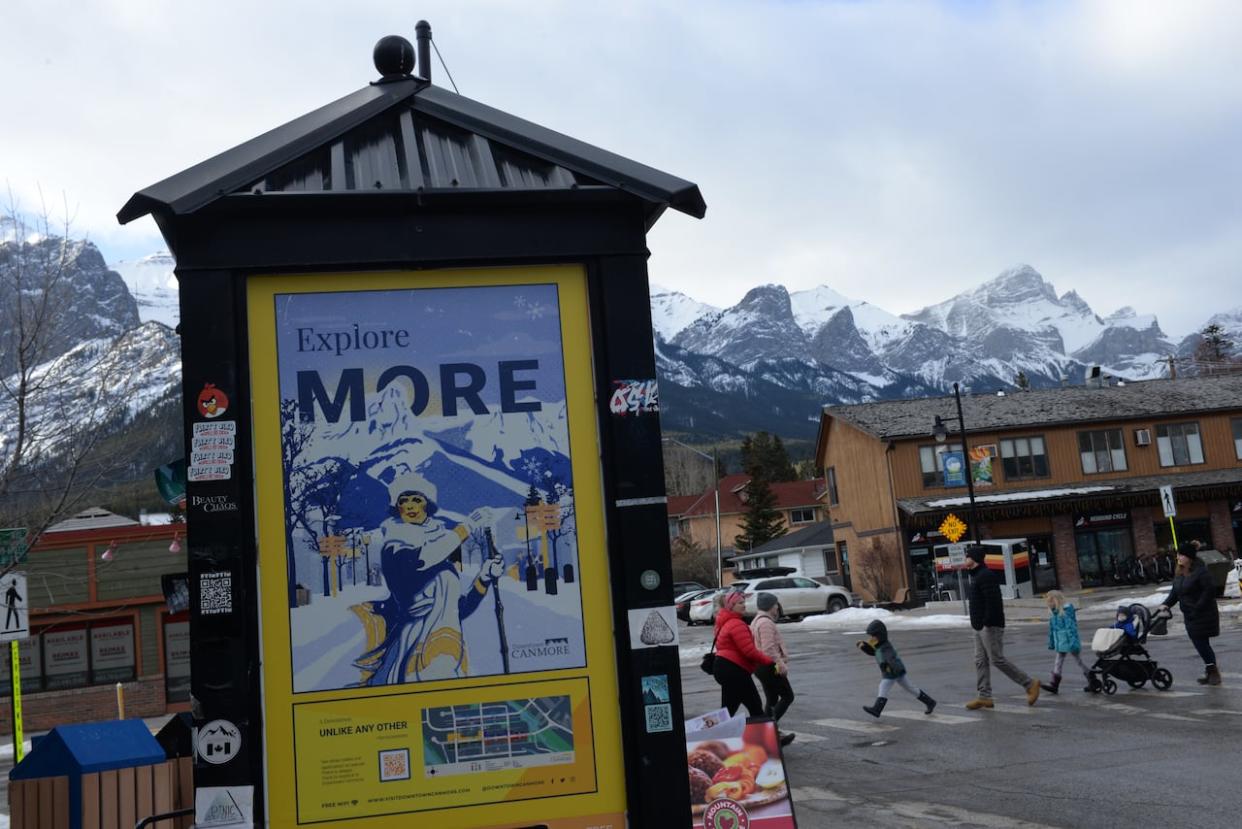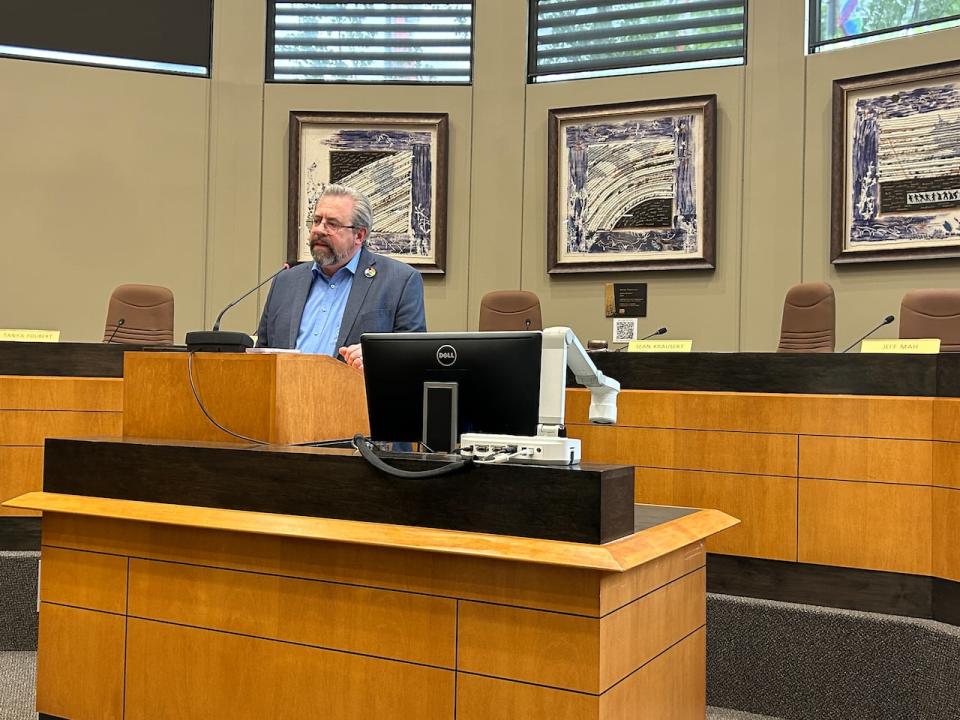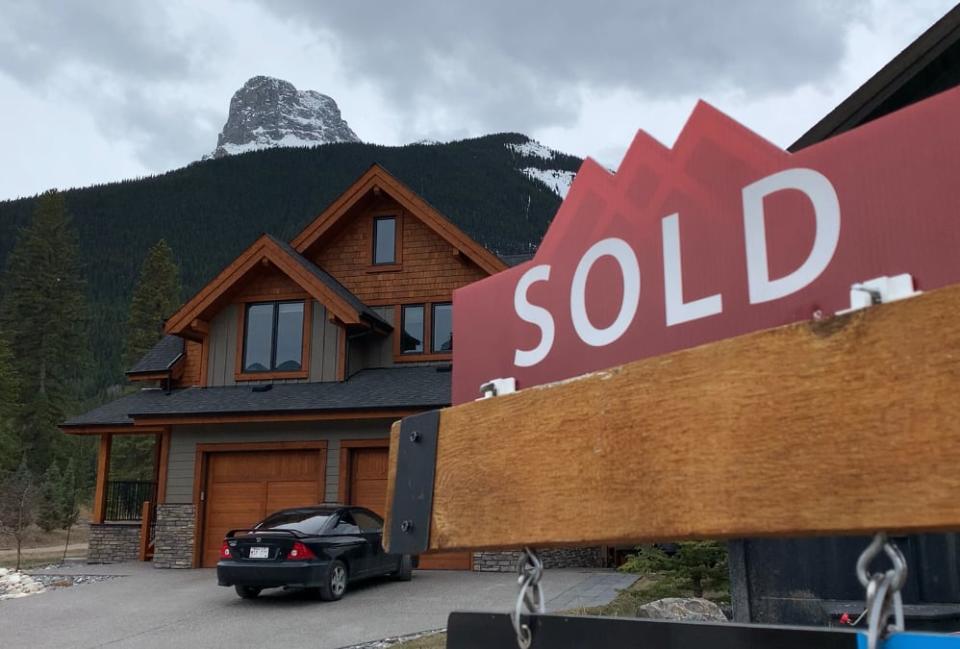Canmore lays out plans to tax vacant homes, make tourist homes thing of the past

When the cost of living in Canmore rivals centres like Toronto and Vancouver, tackling housing affordability and availability in the mountain town borrows from those bustling cities.
Last year, the town laid out its housing action plan, meant to tackle Canmore's housing crisis.
A livability task force was formed with expert stakeholders, councillors and the mayor to take a look at the next steps in phasing out tourist homes and investigating steeper taxes for sitting on vacant real estate or second homes.
Recommendations were presented to the town's council on Tuesday. Councillors voted unanimously to trudge forward, asking administration to draft implementation plans, outlining what it will take to bring the recommendations into force.
"This is another example of bold initiatives to address our housing crisis," said Mayor Sean Krausert. "Many of the solutions that some might put forward that are quite simple are also quite impossible. This is the complexity this group looked at, what is possible and how can we boldly address that?"
Coun. Jeff Mah called the report a multi-pronged approach — as opposed to a silver bullet solution — not just for the town's housing woes but dreams of building a viable community.
Krausert said the next steps will include reviewing the implementation plan, which could propose bylaws, land use and policy changes. It's a process that will include engagement and public hearings.
"All housing units need to be part of the solution, either in housing a primary resident as owner or tenant or by paying more in taxes," said Krausert, who was a member of the task force.
Canmore's housing reality
The price of housing in Canmore has increased by 65 per cent since 2006, compared with the provincial average of 37 per cent.
Numbers from the 2022 residential housing mix break down the pressures: there are more units classified as "tourist homes'' than rental apartments. But tourist homes account for only 4.4 per cent of the town's housing stock.
According to the 2021 census, 74 per cent of the town's total private dwellings are occupied by "usual residents" — people who consider their Canmore home their main home. This is low compared to the provincewide figure of 92 per cent.
To keep up with population demands by 2030, a consultant calculated Canmore would need 2,156 units for full-time residents and 500 units to accommodate those with second homes in the town.
Over four months, the town's livability task force looked at ways to meet housing demands and shift affordability trends.
Members included experts in tourism, the local real estate industry, property management, housing and development.
What's been recommended:
Phase out the tourist home designation
Tourist homes may not account for a big chunk of the town's housing stock but they are the second-fastest growing housing type in Canmore, behind multi-unit condos.
"It's a small part but potentially, as we've seen in other communities, potentially a really important part," Krausert said. "It's really about limiting the growth of this type of use."
The task force recommends all of the existing properties that fall under this category would keep that status — but new tourist homes wouldn't be approved after a set date.
Homeowners who choose to continue operating these short-term rentals would face a commercial tax rate, even if the owner is using the home for "personal use."
These extra costs could encourage the property owner to ask the town to reclassify their home as residential, permanently giving up the tourist home designation.

Mayor Sean Krausert says the town needs more stakeholder involvement to help solve the housing crisis — including other levels of government, businesses, developers and residents. (Karina Zapata/CBC)
Tax tools to support full-time, resident-occupied homes:
To encourage homeowners to live in their properties full-time, the task force recommended a rebate program for full-time residents. Those who don't qualify would face a higher cost when tax season comes.
That higher tax rate would be phased in over time so the town can watch how the market reacts.
"You'll see some of the condo units, I think, come on the (rental) market or sell, and they'll be sold likely to permanent residents, and then the higher value properties, I think they'll just get caught in the tax," said Ben Brunnen, principal and founder of Verum Consulting.
Incentives for purpose-built rentals:
The task force looked at things like incentives and policy changes to address the slump in purpose-built rental projects.
"The economics do not make sense as is, so we need to be able to adjust the conditions to make them attractive to the private sector," said Krausert.

According to the 2021 census, 74 per cent of the town's total private dwellings are occupied by people who consider their Canmore home their main home. This is low compared to the provincewide figure of 92 per cent. (Bryan Labby/CBC)
One proposed tool: a grant or tax relief program exempting new purpose-built rental properties from 75 per cent of municipal residential property taxes for a decade, with some conditions.
Long road ahead before rules change
While councillors accepted recommendations from the task force without tweaks or changes, Krausert said implementation will take time.
Administration now needs to work on an implementation plan, which will still face public engagement, public hearings and votes from councillors.
Changes could be ready by 2025 at the earliest, the town's mayor said.

